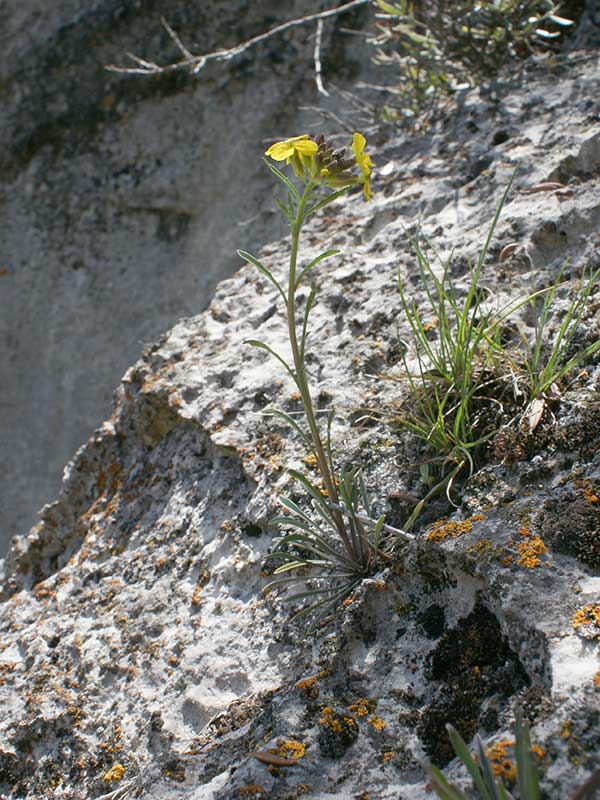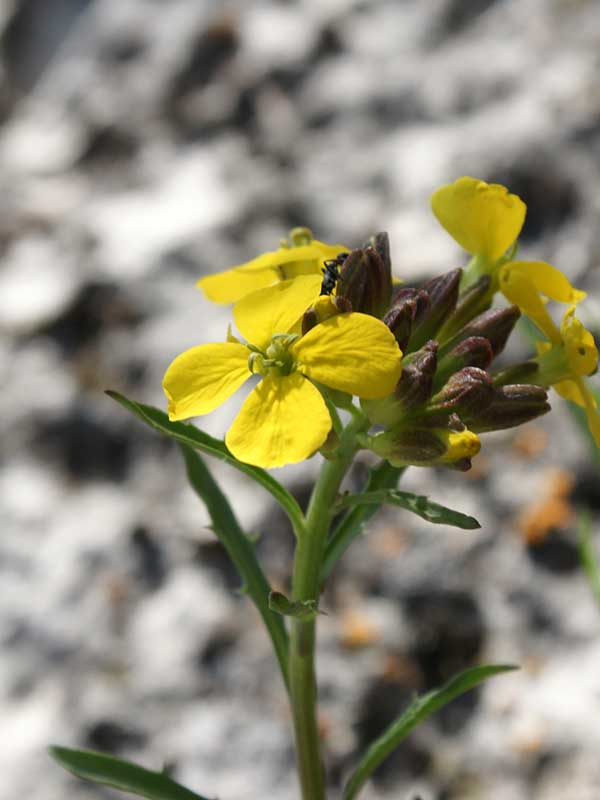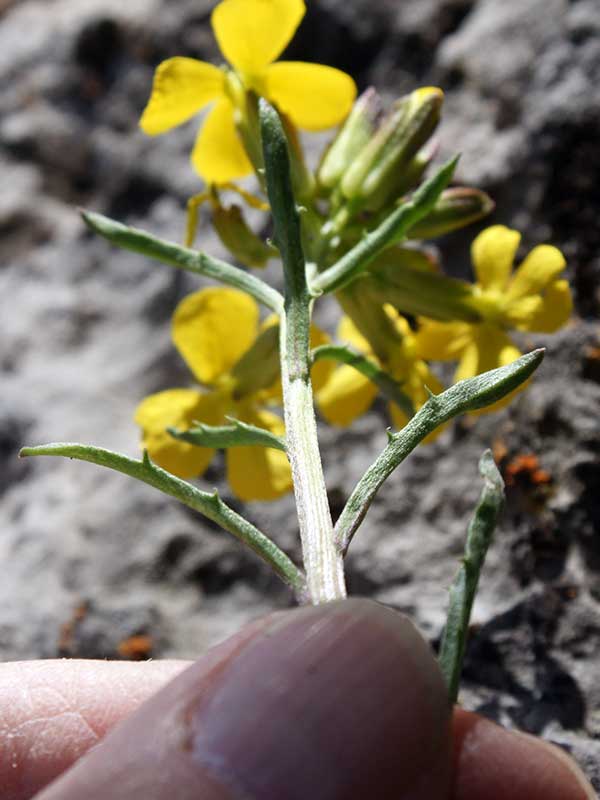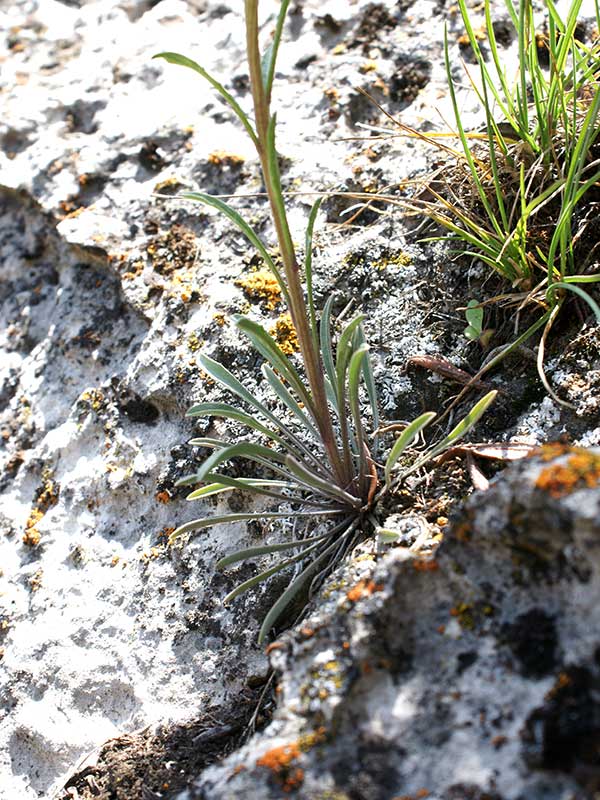Erysimum capitatum / western wallflower
- yellow (usually) 4-petaled flowers at top of stem
- inflorescence may be as big as a baseball, and round
- mostly basal rosette of leaves
- cauline leaves narrow with small teeth
- siliques horizontal to nearly vertical; relatively long
- variety of habitats, but not wetlands
Also known as: sanddune wallflower, prairie rocket
Western wallflower is a biennial or short-lived crucifer. The majority of leaves are found in a basal rosette. From that rosette, there may be 1 or more flowering stalks with sparse leaves. The leaves may be slightly hairy.
The species is wide-spread, common and highly variable in size, inflorescence size and flower color. The specimen photographed here was at the top of Dry Henderson in early May, but flowering may continue throughout the summer.
Western wallflower flowers have 4 flat, often, perhaps usually, bright yellow petals. They may, however, alternately be orange or even red or purple, making identification “interesting”. The flowers are about an inch wide, and occur in dense racemic clusters at the stem tips. Though the specimen photographed here is rather short with only a few flowers, it was growing out of a crack in a rock. On more fertile sites, this species can be a couple feet tall with a large, ball-shaped inflorescence similar to other rockets.
The fruit are rather long siliques, usually nearly erect along the stem, 4-sided, and either straight or curved.
The sparse leaves on the stem are linear and lanceolate. They lack petioles and the margins are either entire or slightly toothed. They may have hairy pubescence.
Western wallflower is equally at home in montane and alpine meadows and in dry canyons. It has some, but not extreme, drought tolerance. Basically, the only places you can expect not to find it are wet habitats.
Wallflowers are significant sources of food for wildlife, including the caterpillars of a number of butterfly and moth species. E. capitatum is insect pollinated (whether it can self or not, I don’t know). Interestingly, in one study, over 80% of the pollinator visits were by two ant species.
| Color | |
|---|---|
| Family | |
| Blossom size | |
| Inflorescence size | |
| Inflorescence type | |
| When? | |
| Where? |




